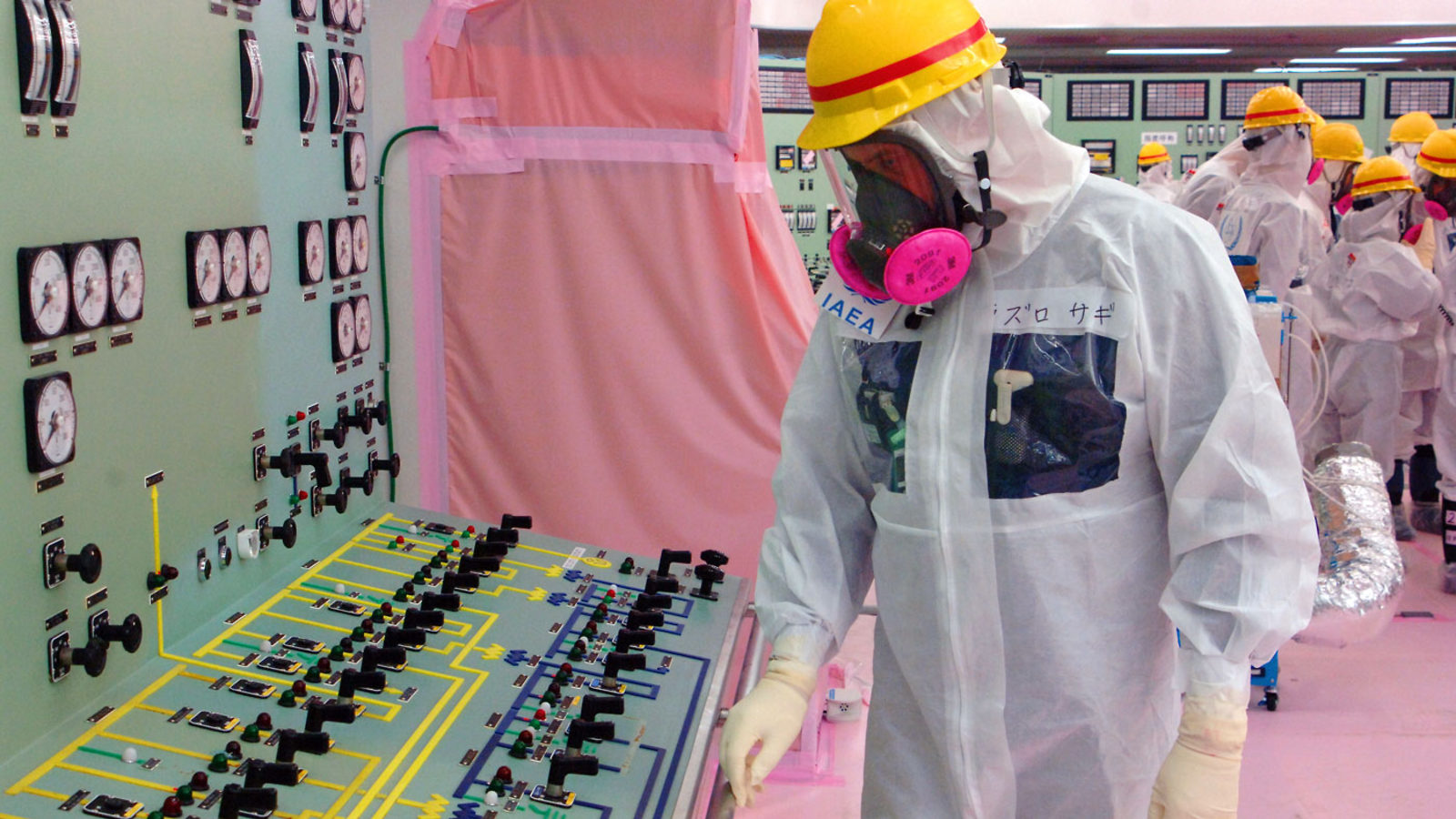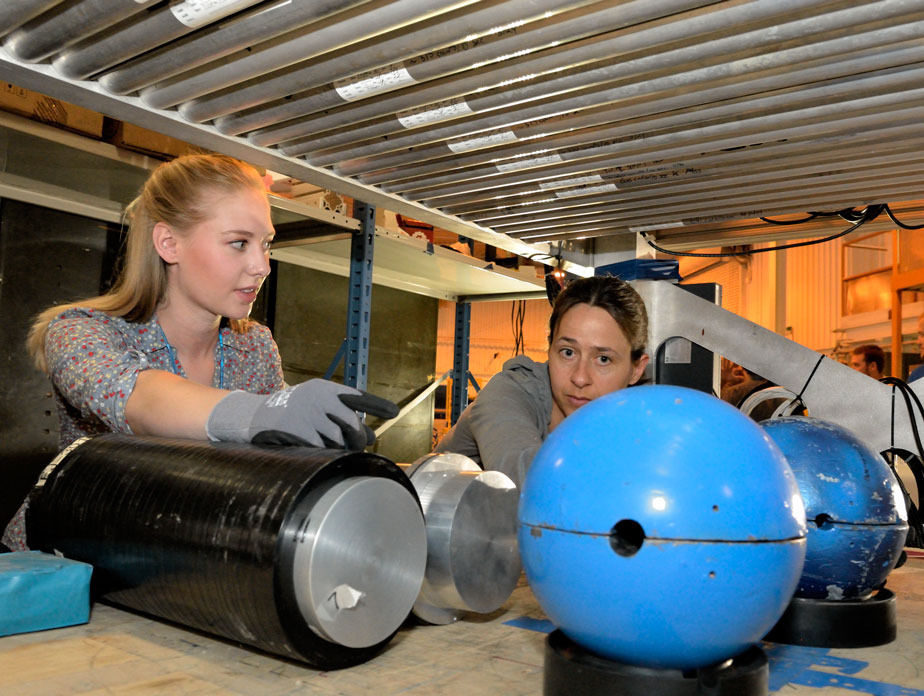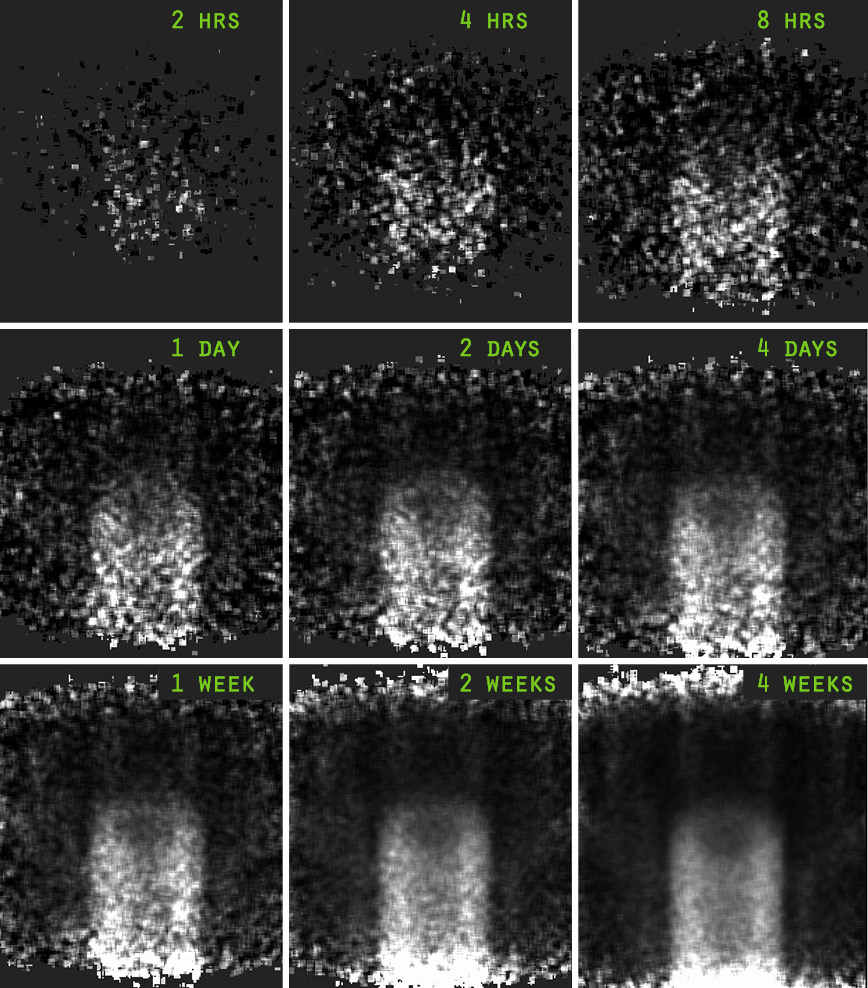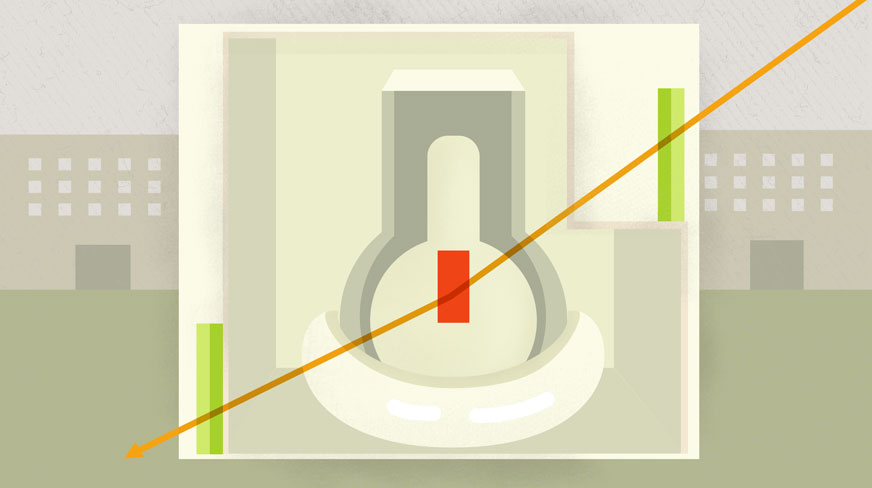A little after lunchtime on Friday, March 11, 2011, a magnitude 9.0 earthquake violently shook the Pacific Ocean off the northeast coast of Japan. The intense motion did more than jostle buildings and roads; it moved the entirety of Japan’s largest island, Honshu, a few meters east. At eastern Honshu’s Fukushima Daiichi power plant, one of the 25 largest nuclear power stations in the world, all operating units shut down automatically when the quake hit, showing no significant damage.
Then, almost an hour after the quake, a 50-foot tsunami wave traveling 70 miles per hour swept over the facility. The wave drenched Fukushima Daiichi and some of its sensitive electronics in seawater, dislodged large objects that pummeled buildings with the water’s ebb and flow, and—worst of all—cut its power supply and critically disabled the reactors’ power systems. Of the six reactor units at Fukushima Daiichi, three were in operation when the earthquake struck. Without power, operators had little ability to control or cool the reactor cores, resulting in hydrogen explosions that may have released radiation.
Today, radioactive water continues to leak from the damaged reactors at Fukushima Daiichi. It’s thought that the nuclear material in three reactor cores melted, but a full assessment of their condition is still too treacherous to carry out. Plant workers cannot safely enter the areas containing the remains of fuel rods, which are thought to have re-solidified, wrapped around the floors and substructures of the reactor buildings. Robotic cameras can’t be sent inside the reactor cores because doing so could release a plume of radiation. And even if there were a safe way to get a camera inside, it wouldn’t last long in the high-radiation environment.
Without eyes on the inside, it’s difficult to know what exactly is inside each of the reactor cores.
Yet there is one thing that can—and regularly does—move safely through the reactor core: a particle called the muon. A heavy cousin of the electron, these naturally occurring particles are made when cosmic rays—mostly protons—from space charge through Earth’s atmosphere. This generates a shower of other particles, including muons, that continually rain down over every square inch of Earth’s surface. In fact, more than 500 such muons have zipped through your body since you started reading this article.
An international team of physicists and engineers plans to use these particles to peek inside Fukushima Daiichi’s reactor cores. The team hopes that with muon-vision, the exact level of destruction inside—and consequently the best method of decommissioning the site—will become clear.
An idea borne from physics
Since the early 2000s, a small team at Los Alamos National Laboratory in New Mexico has developed technology that uses muons to examine fragile or otherwise inaccessible nuclear materials. Using much of the same technology employed by particle physicists and astrophysicists, they’ve successfully viewed the insides of aging nuclear weapons systems.
In the past decade, they have also worked with Decision Sciences Corporation, a technology company headquartered in Virginia, to commercialize a muon-detection system for scanning cargo crossing international borders, looking for smuggled nuclear material.
The process they use, called muon tomography, is similar to taking an X-ray, only it uses naturally produced muons. These particles don’t damage the imaged materials and, because they already stream through everything on Earth, they can be used to image even the most sensitive objects. Better yet, a huge amount of shielding is needed to stop muons from passing through an object, making it nearly impossible to hide from muon tomography.
“Everything around you is constantly being radiographed by muons,” says Christopher Morris, who leads the Los Alamos muon tomography team. “All you have to do is set some detectors above and below it, and measure the angles well enough to make a picture.”
By determining how muons scatter as they interact with electrons and nuclei within the item, the team’s software creates a three-dimensional picture of what’s inside.
And then came the tsunami
The idea of using the technology to image Fukushima Daiichi’s nuclear cores surfaced just days after the 2011 earthquake and tsunami. At the time, Morris was on vacation in Mexico. He recalls receiving urgent emails from Cas Milner and Haruo Miyadera, members of the Los Alamos muon team. Miyadera in particular was gravely concerned about the incident and suggested that their muon imaging techniques could be used to image the inside of the reactor cores.
“It was becoming clear that things were pretty dire over there, and that the cores had melted down,” Morris says. “While I was still in Mexico, we discussed the idea in great detail over email. We worked through the equations, and it became clear that our technique really could make a difference. We figured out that we would be able to see the reactor core.”
After concluding with Morris that it was feasible, Miyadera wrote a letter to Banri Kaieda, Japan’s then-Minister of Economy, Trade and Industry, suggesting the use of muon tomography at Fukushima Daiichi. The Minister replied positively, leading the Los Alamos group to begin feasibility studies that attracted the interest of Toshiba, which leads many of the recovery projects that require R&D efforts.
“Haruo has devoted his career to find a way to make this happen,” Morris says. “Without him, it wouldn’t be happening at all—or at least not on this timescale.”
To prove the technology, the Los Alamos team shipped a demo detector system to a small, working nuclear reactor in a Toshiba facility in Kawasaki, Japan. There, they placed one detector on either side of the reactor core.
“When we analyzed our data we discovered that in addition to the fuel in the reactor core, they had put a few fuel bundles off to the side that we didn’t know about,” Morris says. “They were really impressed that not only could we image the core, but that we also found those bundles.”
Based on that successful test, Toshiba signed an agreement with Los Alamos and later with Decision Sciences to design and manufacture muon-detector components for use at Fukushima Daiichi. The Los Alamos team will develop the software for particle tracking and data analysis, while Decision Sciences will build major components of two large muon detectors and their associated structural elements. The Toshiba team, now led by Miyadera, will develop read-out electronics, manage the project and construct the detectors at the Fukushima Daiichi site.
“We’re confident in this technology,” says Konstantin Borozdin, a former member of Morris’ Los Alamos team who now manages Decision Sciences’ work on the Fukushima project. “We can absolutely make a difference.”
At Fukushima Daiichi
That said, the conditions at Fukushima Daiichi will be more challenging than any previous muon tomography experiment. Radiation levels are high, space is tight, and there are many unknowns.
“You’ve probably heard about Three Mile Island,” Miyadera says. “In that case, people were surprised at every turn because what they found inside was beyond their speculation. Many of their plans didn’t work because they didn’t understand what was inside.”
To get a better understanding of the area, the team plans to start by imaging the reactor pressure vessel—the innermost container that holds nuclear fuel—within the facility’s “Unit 2” reactor. Unit 2 was one of the three reactors in operation at the time of the earthquake. When the unit’s cooling systems failed after the tsunami, it’s thought that the fuel rods may have melted. At this point, the nuclear material may not even be fully contained within the pressure vessel, having leaked onto the floor below.
“Right now, what we know is based on speculation and indirect measurements,” Miyadera says. “We have no images at all inside the reactor pressure vessel.”
The team will begin by placing detectors on either side of the unit. At 50 square meters, the detectors will be larger than any previously built for muon tomography. One will need to be built on the second floor of a nearby building, transported through the building’s doorways piece by piece. The second will be installed in front of the reactor building’s exterior walls.
Those exterior walls, made of concrete 10 feet thick, offer their own challenge. Based on computer simulations run with the particle physics software GEANT4, the walls are expected to reduce the resolution to about 30 centimeters.
In addition, the team must also prepare for the high radiation levels present just outside of the reactor units.
“The demonstration at Kawasaki wasn’t operating in a situation where the vessel had been breached and there were high levels of gamma radiation,” says Decision Sciences CEO Stanton Sloane. “That means that we’ll need to design different electronics that can withstand such conditions.”
To see through the gamma radiation and into the reactor, the team will need to develop new software logic and design a relay system that keeps the two detectors—which are farther apart than in any previous muon tomography experiment—synchronized.
“The biggest change will be adding a hardware trigger that downselects the amount of data”—essentially weeding out gamma background noise, Borozdin says. “This approach is similar to what’s used in high-energy physics experiments at places like CERN and SLAC.”
But unlike most experiments at CERN and SLAC, the muon detector will be installed in a radiation environment where workers need to severely limit their time.
“We’re still in the early stages,” Borozdin says. “We have a great concept and a clear path forward. But we still have a lot of work to do.”
Identifying a path forward
The system is expected to be in place by mid-2015, and the team hopes to have a good picture of Unit 2’s reactor pressure vessel by autumn of that year.
Full decommissioning of the plant is expected to take at least three decades. Even with that extended timeframe, everyone involved in the project agrees that seeing the interior of the reactor units as soon as possible is essential to an efficient and thorough decommissioning. Muons, with their ability to pass right through anything—even a melted reactor core—might just provide the insight needed to identify the best path forward.
“Once we make 3D images of what’s inside the reactor, others can design and build the special tools and robots that they’ll need to go in and take out what’s there,” Morris says. “If you know what’s there now, and how much is there, then you’re way ahead of the game.”










